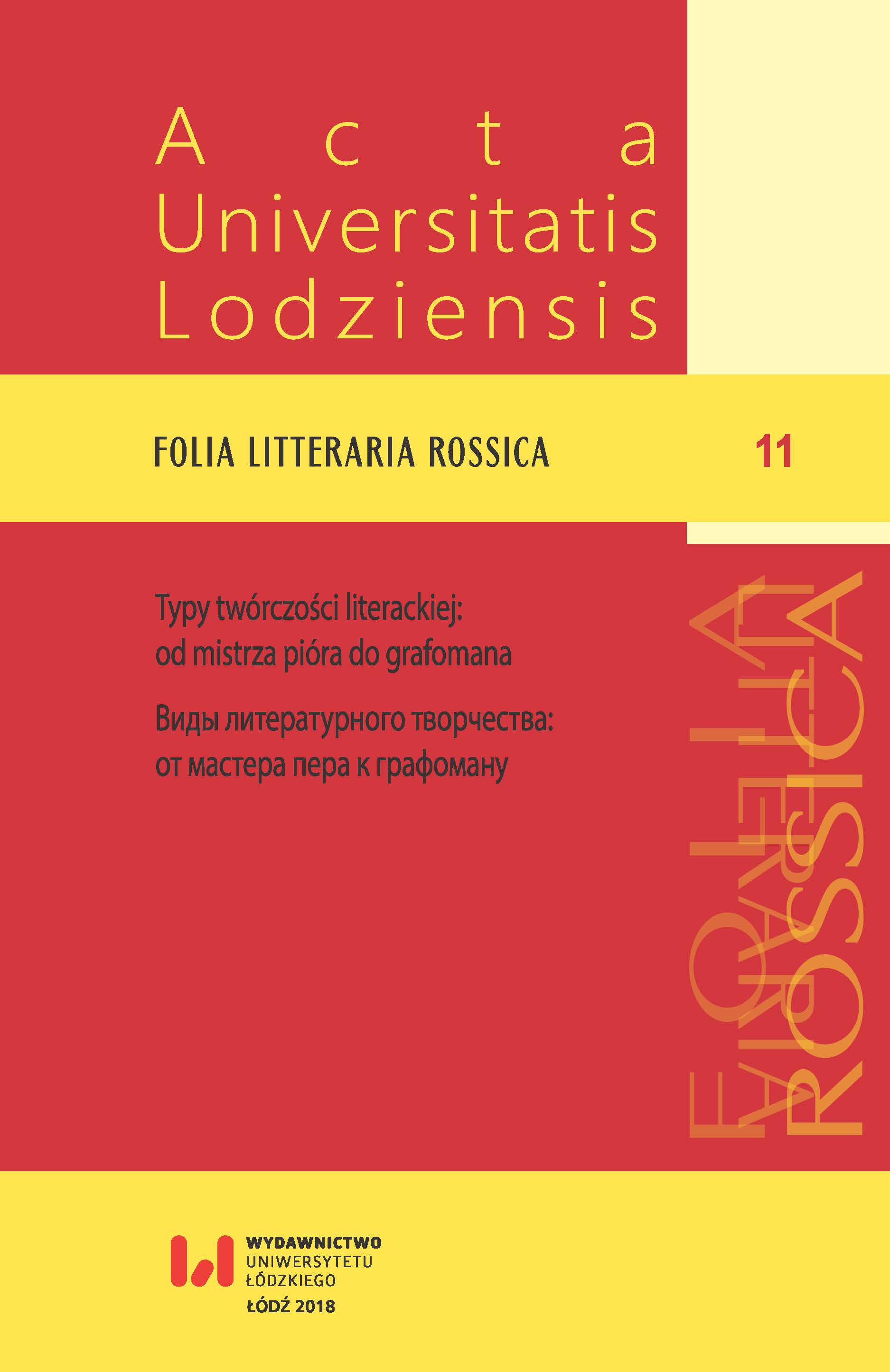Дон Жуан в Сети. К вопросу о качестве литературного процесса в Интернете
DOI:
https://doi.org/10.18778/1427-9681.11.17Słowa kluczowe:
Дон Жуан, интернет-литература, массовая литература, графомания в СетиAbstrakt
В статье подвергается исследованию феномен интернет-графомании на примере романа Марины Масловой Дон Жуан (2004). Выбор текста подиктован нашим интересом к бытованию и трансформациям вечного образа в интернет-пространстве. На примере текста Масловой мы выделили и назвали основные приметы сетературы, такие как: вторичность образов, напряженная и привлекательная интрига, закрученный сюжет, шаблонность, скудный запас литературных образов и мотивов, поэтика повседневности, перманентная динамичность, полиавторность, нарушение дистанции между автором и текстом и др. Анализ романа Дон Жуан позволил нам выявить также механизмы переноса известного мирового образа в интернет-пространство. В связи с этим вопросом мы отметили обращение автора романа лишь к отдельным ситуациям и мотивам истории Дон Жуана, приспособление их к жанру дамского романа, свободное отношение к литературной традиции, лишение образа сюжетной самостоятельности.
Pobrania
Bibliografia
Bulkina, Inna. “Proza ’nulevykh’”. Znamya, No. 9 (2010). http://magazines.russ.ru/znamia/2010/9/ bu15.html
Google Scholar
Chernoritskaya, Olga. “Samosoznanie setevoi literatury. Fenomenologiya setevogo avtorstva”. Topos, (21.03.2005). http://www.topos.ru/article/3393
Google Scholar
Kornev, Sergei. “’Setevaya literatura’ i zavershenie postmoderna. Internet kak mesto obitaniya literatury”. Novoe literaturnoe obozrenie, No. 32 (1988). http://magazines.russ.ru/nlo/1998/32/korn.html [04.07.2018].
Google Scholar
Manin, Dmitrii. “Vmesto manifesta”. Setevaya Slovesnost, (1998). https://www.netslova.ru/teoriya/seteratura.html
Google Scholar
style="margin: 0cm 0cm 10pt;">Tochilov, Konstantin Yu. Glamur kak esteticheskii fenomen: genezis i istoricheskie modifikatsii. Avtoreferat dissertatsii na soiskanie uchenoi stepeni kandidata filosofskikh nauk. Moskva, 2011.
Google Scholar
Vinogradov, Aleksei. Uchebnik po grafomanii. 2004. https://www.litmir.me/bd/?b=129901
Google Scholar
Vinogradov, Pavel. “Literatura ukhodit v set”. Nevskoe vremya (16.03.2010). https://nvspb.ru/2010/03/16/literatura-uhodit-v-set-41971
Google Scholar
http://www.dissercat.com/content/glamur-kak-esteticheskii-fenomen.
Google Scholar
https://www.proza.ru/comments.html?2004/06/17-06
Google Scholar
Pobrania
Opublikowane
Jak cytować
Numer
Dział
Licencja
Prawa autorskie (c) 2018 Acta Universitatis Lodziensis. Folia Litteraria Rossica

Utwór dostępny jest na licencji Creative Commons Uznanie autorstwa – Użycie niekomercyjne – Bez utworów zależnych 4.0 Międzynarodowe.












